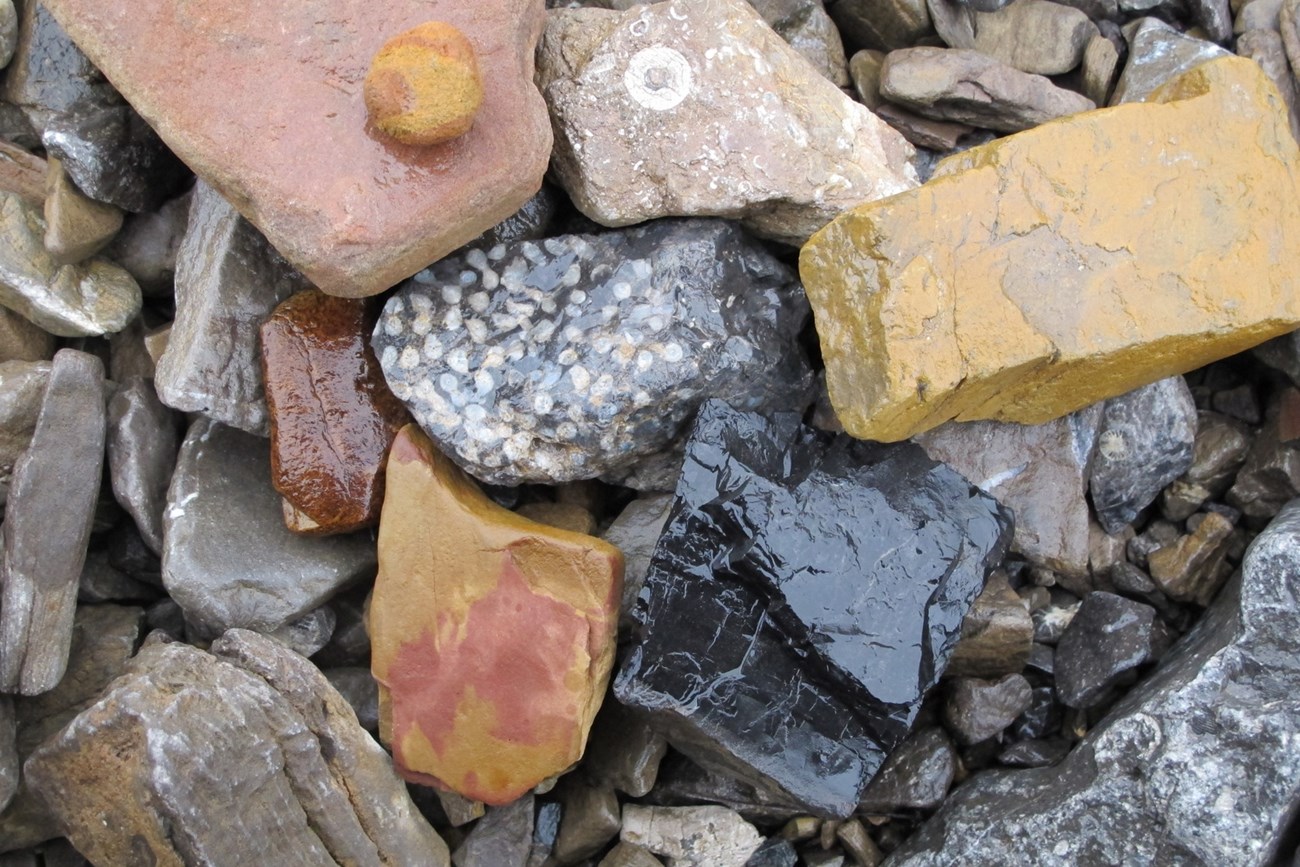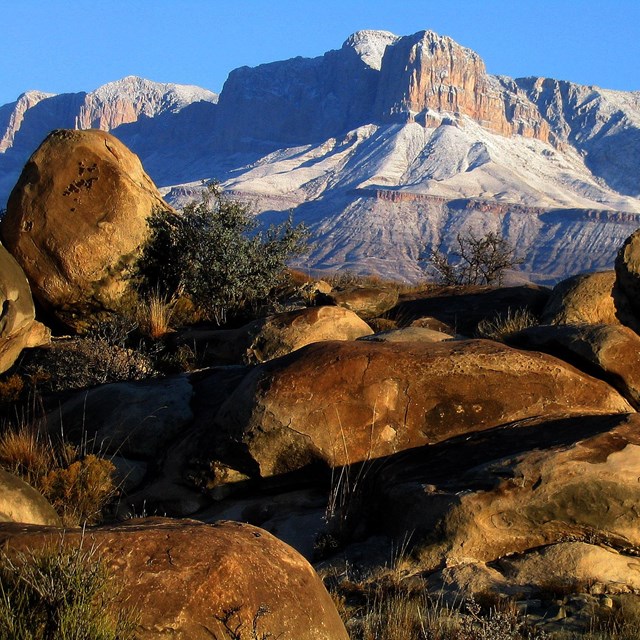
Introduction
Rocks are all around us. They make up the backbones of hills and mountains and the foundations of plains and valleys. Beneath the soil you walk on and the deep layers of soft mud that cover the ocean basins is a basement of hard rock.
Rocks are made up of different minerals, broken pieces of crystals, or broken pieces of rocks. Some rocks are made of the shells of once-living animals, or of compressed pieces of plants. What a rock is made of, the shapes of the grains, and how the grains fit together all provide valuable clues to help us unlock the rock's history hidden within.
Rocks are divided into three basic types depending on how they were formed: Igneous, Sedimentary, and Metamorphic.
How Rocks are Classified
Natural objects, such as rocks and minerals, contribute to the beauty and wonderment of the National Parks and should be left, as they were found, so that others can experience a sense of discovery.
Rock Types
-
 Igneous Rocks
Igneous RocksLearn more about igneous rocks and where to see them.
-
 Sedimentary Rocks
Sedimentary RocksLearn more about sedimentary rocks and where to see them.
-
 Metamorphic Rocks
Metamorphic RocksLearn more about metamorphic rocks and where to see them.
Featured Video—One Mountain, 3 Rock Types
Related Links
- Badlands National Park, South Dakota [Geodiversity Atlas] [Park Home]
- Craters of the Moon National Monument & Preserve, Idaho [Geodiversity Atlas] [Park Home]
- Grand Teton National Park, Wyoming [Geodiversity Atlas] [Park Home]
- Mount Rainier National Park, Washington [Geodiversity Atlas] [Park Home]
- National Mall and Memorial Parks, District of Columbia [Geodiversity Atlas] [Park Home]
Last updated: August 26, 2025
